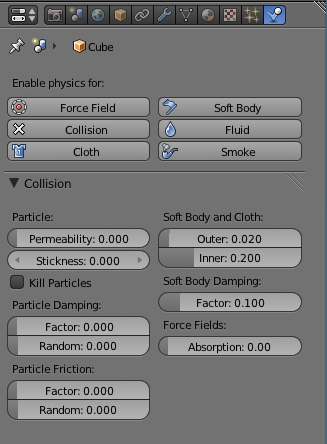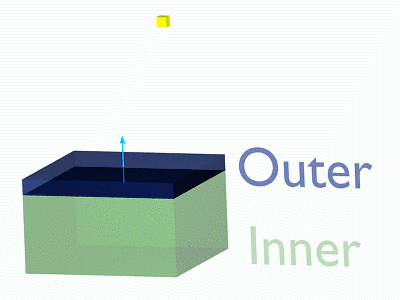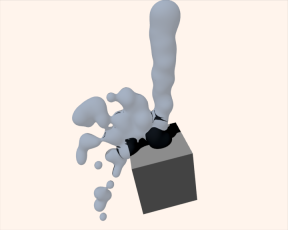Doc:2.6/Manual/Physics/Collision
Collisions
Particles, Soft Bodies and Cloth objects may collide with mesh objects. Boids try to avoid Collision objects.
- The objects need to share at least one common layer to have effect.
- You may limit the effect on particles to a group of objects (in the Field Weights panel).
- Deflection for softbody objects is difficult, they often penetrate the colliding objects.
- Hair particles ignore deflecting objects (but you can animate them as softbodies which take deflection into account).
If you change the deflection settings for an object you have to recalculate the particle, softbody or cloth system (Free Cache), this is not done automatically. You can clear the cache for all selected objects with CtrlB → Free cache selected.
See details about rigid bodies collisions here.
Mode: Object Mode
Panel: Physics context → Collision panel
Options
- Permeability
- Fraction of particles passing through the mesh. Can be animated with Object F-curves, Perm channel.
- Stickiness
- How much particles stick to the object.
- Kill Particles
- Deletes Particles upon impact.
- Damping Factor
- Damping during a collision (independent of the velocity of the particles).
- Random damping
- Random variation of damping.
- Friction Factor
- Friction during movements along the surface.
- Random friction
- Random variation of friction.
Soft Body and Cloth Interaction
- Outer
- Size of the outer collision zone.
- Inner
- Size of the inner collision zone (padding distance). Only effective for softbodies, cloth only use outer collision value.
Outside and inside is defined by the face normal, depicted as blue arrow in (A softbody vertex colliding with a plane).
- Damping Factor
- Damping during a collision.
Softbody collisions are difficult to get perfect. If one of the objects move too fast, the soft body will penetrate the mesh. See also the section about Soft Bodies.
Force Field Interaction
- Absorption
- A deflector can also deflect effectors. You can specify some collision/deflector objects which deflect a specific portion of the effector force using the Absorption value. 100% absorption results in no force getting through the collision/deflector object at all. If you have 3 collision object behind each other with e.g. 10%, 43% and 3%, the absorption ends up at around 50% (
100×(1-0.1)×(1-0.43)×(1-0.03)).
Examples
Here is a Meta object, dupliverted to a particle system emitting downwards, and deflected by a mesh cube:
Hints
- Make sure that the normals of the mesh surface are facing towards the particles/points for correct deflection.
- Hair particles react directly to force fields, so if you use a force field with a short range you don’t need necessarily collision.
- Hair particles avoid their emitting mesh if you edit them in Particle mode. So you can at least model the hair with collision.


